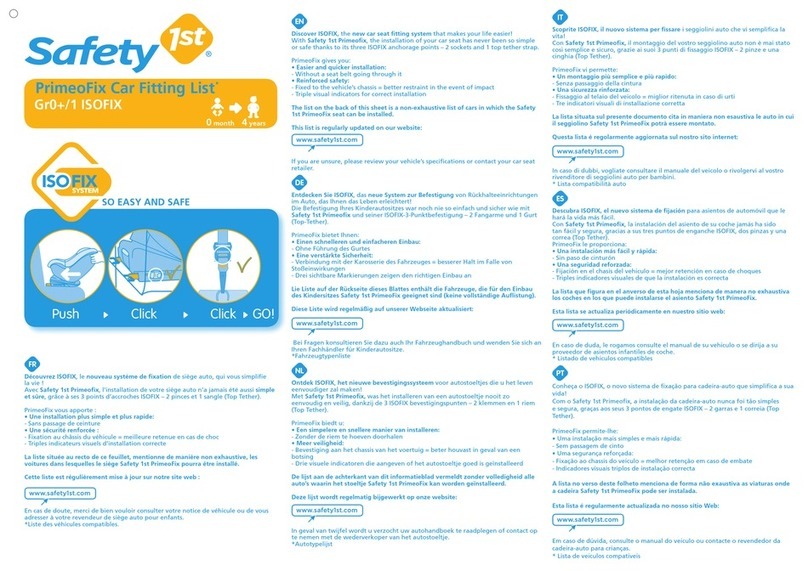Table of Contents
Getting Started..................................... 1
Parts of the Child Restraint.......................................1
Prepare Child Restraint to Fit Your Child....................3
How Does Your Child Fit?.........................................5
Changing Position of Buckle.....................................6
Adjusting Headrest/Harness Height............................8
Harness System Adjustments for Smaller Infants........9
Securing Child in Child Restraint...............................12
General Use ........................................... 14
Reclining Child Restraint..........................................14
Storing Harness System...........................................15
Removing Seat Pad for Cleaning...............................18
Installing Harness System........................................21
Accessories on Select Models..................................24
Safety Information............................... 26
Child Restraint and Booster Seat Use........................26
Installation in Vehicle...............................................26
Vehicle Seating Position...........................................27
Transport Canada Regulations..................................28
Storing Child Restraint.............................................28
Vehicle Information ............................. 29
Understanding Your Vehicle......................................29
Choosing UAS or Vehicle Belts..................................30
Knowing Your Vehicle Belts.......................................31
Aircraft Information .................................................33
Rear Facing ........................................... 34
UAS Installation................................................35
Vehicle Belt Installation .....................................39
Forward Facing .................................... 42
Tether Use........................................................43
UAS Installation................................................44
Vehicle Belt Installation .....................................47
Booster Seat ......................................... 49
Lap and Shoulder Belt Installation......................50
Important Information........................ 52
Using a Locking Clip................................................52
Dorel Juvenile Group Information..............................54
Registration and Safety Notices................................55
Replacement Parts Order Form.................................56
Warranty.................................................................58




























